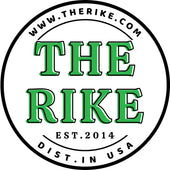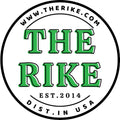Transform Your Garden: Quality Seeds for Healing Herbs
Are you ready to transform your garden into a haven of healing herbs? Whether you're a beginner gardener or an experienced horticulturist, the journey to growing medicinal plants starts with quality seeds. In this guide, we’ll explore the best seeds for healing herbs, their benefits, and how to cultivate them effectively.
Table of Contents
- Benefits of Healing Herbs
- Top Healing Herbs to Plant
- Choosing Quality Seeds
- Planting and Cultivating Healing Herbs
- Harvesting and Using Your Herbs
- FAQ
Benefits of Healing Herbs
Healing herbs offer a plethora of benefits that make them valuable additions to any garden. Here are some of the primary advantages:
- Natural Remedies: Healing herbs have been used for centuries to treat various ailments naturally.
- Improved Health: Incorporating herbs into your diet can provide essential vitamins and minerals, supporting overall health.
- Organic Gardening: Growing your own herbs allows you to cultivate organic produce free of pesticides and chemicals.
- Aromatherapy: Many herbs possess fragrant oils that can enhance mood and promote relaxation.
- Culinary Uses: Many healing herbs can also be used in cooking to add flavor while providing health benefits.
Top Healing Herbs to Plant
Knowing which herbs to grow is essential for creating a thriving healing garden. Here are some of the most beneficial herbs you can plant:
Basil
Basil is renowned for its anti-inflammatory and antiseptic properties. This aromatic herb is not only a staple in many kitchens but also boasts several healing benefits.
Peppermint
Peppermint is perfect for aiding digestion and alleviating headaches. Its refreshing aroma can also help improve mental alertness.
Lavender
Lavender is well-known for its calming effects, making it ideal for reducing anxiety and promoting sleep. It’s also excellent for skin healing.
Chamomile
Chamomile is a beloved herb for its soothing properties. It's commonly used in teas to help with sleep and digestion.
Thyme
Thyme is packed with antioxidants and is known to boost the immune system. It also has antibacterial properties, making it ideal for respiratory ailments.
Choosing Quality Seeds
The success of your healing herb garden hinges on selecting high-quality seeds. Here’s how you can ensure you’re making the right choice:
- Research Your Seeds: Look for reputable suppliers who offer organic and non-GMO seeds.
- Check Germination Rates: Quality seeds should have a high germination rate, typically over 85%.
- Read Reviews: Customer feedback can provide insights into the quality and performance of specific seeds.
- Look for Certifications: Certifications such as USDA Organic can ensure you are purchasing high-quality seeds.
Planting and Cultivating Healing Herbs
Successfully growing healing herbs requires attention to detail and care. Follow these guidelines for planting and cultivating your herbs:
Soil Preparation
Start with rich, well-draining soil. Amend the soil with compost to provide essential nutrients for your herbs.
Sunlight Requirements
Most healing herbs thrive in full sun, requiring at least 6-8 hours of sunlight per day. Ensure your garden is located in a sunny spot.
Watering
Herbs require regular watering, but be careful not to overwater. Aim for a slightly moist soil, allowing it to dry out between waterings.
Pest Control
Embrace organic pest control methods such as introducing beneficial insects or using natural sprays to protect your herbs from pests.
Harvesting and Using Your Herbs
Harvesting your herbs correctly ensures maximum flavor and potency. Here’s how to do it:
When to Harvest
Harvest your herbs in the morning after the dew has evaporated for the best flavor. Look for lush, healthy leaves and cut them just above the leaf node.
Using Your Herbs
There are numerous ways to utilize your freshly harvested herbs:
- Teas: Brew fresh herbs like chamomile or peppermint for soothing teas.
- Culinary Dishes: Add chopped fresh herbs to salads, soups, or main dishes for extra flavor and health benefits.
- Essential Oils: Some herbs like lavender can be distilled into essential oils for aromatherapy.
- Drying: Dry your herbs to preserve them for long-term use.
FAQ
What are the best healing herbs for beginners?
Some of the best healing herbs for beginners include basil, mint, and chamomile due to their hardiness and easy growing conditions.
Can I grow healing herbs indoors?
Yes, many healing herbs can be grown indoors. Just ensure they receive adequate sunlight or supplement with grow lights.
How do I know if the seeds are of good quality?
Look for seeds with high germination rates, read reviews from other gardeners, and choose suppliers with good reputations for organic and non-GMO products.
How often should I water my herbs?
Most herbs prefer to dry out slightly between waterings. Check the soil regularly, and water when the top inch feels dry.
What can I use my herbs for?
Your herbs can be used in cooking, making herbal teas, creating essential oils, and even for home remedies.
Transform your garden into a sanctuary of wellness by growing quality seeds for healing herbs. Start today and enjoy the benefits of home-grown herbs for your health and well-being. For premium seeds and more gardening tips, visit therike.com.





Leave a comment